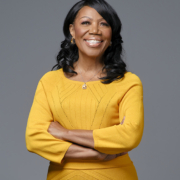Government
The Silent and Deadly Epidemic: Time to Diagnosis for Black Women Living with HIV
World AIDS Day on December 1 is an opportunity for people worldwide to unite in the fight against HIV and AIDS. It’s also time to take stock, be honest,…

The Silent and Deadly Epidemic: Time to Diagnosis for Black Women Living with HIV
Mary Stutts and J. Maurice McCants-Pearsall
World AIDS Day on December 1 is an opportunity for people worldwide to unite in the fight against HIV and AIDS. It’s also time to take stock, be honest, and realize that we still have work to do to protect our communities. Ten years ago, pre-exposure prophylaxis (PrEP), medicine that when taken as prescribed can help reduce the risk of getting HIV by 99%, became available. Yet a decade later we are still seeing historically underserved communities contracting HIV/AIDS at alarming rates.
One major cause for concern is the alarmingly disproportionate impact that HIV/AIDS continues to have on Black women. According to the CDC’s latest HIV Surveillance Report, though Black women make up just 13% of the total female population in the U.S., Black females older than 13 account for 54% of new HIV diagnoses. Even after all the innovation and therapy development, why are we seeing such a disparity in HIV diagnosis among Black females compared to other groups and what can be done?
Many social and structural determinants of health contribute to the deadly impact HIV/AIDS has on the Black community. These include systemic racism and oppression and a lack of access to safe and affordable housing, equitable educational and employment opportunities, and comprehensive and culturally reflective medical care.
The initial media narrative about HIV/AIDS dating back to the 1980s has exacerbated the inequality. Over the last four decades, we’ve come to see the truth of how deeply HIV has affected the Black community, but news stories and public health campaign imagery for years focused heavily on white homosexual males. The media narrative and imagery in campaigns shift didn’t shift until Black men began advocating to be equally represented, but even today, Black women are continuously underrepresented in awareness campaigns.
We see this problem compounded by a disparity in clinical trials, medical interventions, and education that are mainly geared toward homosexual Black and white men. Just 7% of participants in HIV clinical trials are Black women. Some Black women are told by their healthcare providers that they don’t “fit the profile” – often referring to men who have sex with men – for those at risk of contracting HIV, stopping an important health education conversation before it even gets started. To make matters worse, some Black communities are naïve about the prevalence and risk factors for certain diseases, including HIV/AIDS.
So, how can we more effectively reach Black women to understand the risks and prioritize being tested?
- Companies must rework public education and awareness campaigns with Black women in mind. Messaging for Black women must be culturally relevant and designed with black women in mind, recognizing that nuances in messaging will differ from those used in campaigns that have traditionally targeted White and Black homosexual male communities. Campaigns and policies must be designed to speak to the desired patient population in a way that is reflective, engaging, and true to the community.
- Healthcare providers must consistently provide regular screening for all patients for sexually transmitted infections and even more importantly have ongoing dialogue with patients about the importance of screening, particularly for Black women who have sex with men. We’ve grown accustomed to hearing a litany of questions regarding our exposure to people who have tested positive for COVID-19, but healthcare professionals need to take a deep dive when it comes to questions they ask regarding sexual activity and partners. We may find that those questions reveal answers that direct healthcare professionals to ask the appropriate follow-up questions about HIV PrEP.
- Lifescience and biotech companies must provide equitable access to historically underserved communities – access to education about therapies, clinical trial opportunities, and investments in communities through public health media campaigns that are culturally relevant. This includes investing more time and resources in community-based brick and mortar organizations where black women seek medical care and education.
- Companies must encourage ongoing dialogue and education about HIV/AIDS to reduce misinformation and stigma. As an example, the Human Rights Campaign’s #workingpositively initiative invites employers to commit to being visible role models in their support for HIV-positive employees. Organizations can go one step further and review HR policies to make sure coverage plans provide access to resources and services that cater to those at risk of contracting HIV, those who are currently HIV positive, or caretakers of those who are HIV positive.
Forty years since the HIV/AIDS epidemic began, AIDS remains the leading cause of death of women of reproductive age globally. Only by taking bolder, more culturally relevant approaches to ensure ongoing dialogue and education will healthcare and lifesciences companies be able to reach women more effectively to end the silent and deadly epidemic in our Black community.
 |
Mary Stutts is global chief inclusion & health equity officer, Real Chemistry. |
 |
Maurice McCants-Pearsall is vice president of health equity and special initiatives, Real Chemistry. |
healthcare
medicine
health
medical
aids
public health
therapy
clinical trials
cdc

Here Are the Champions! Our Top Performing Stories in 2023
It has been quite a year – not just for the psychedelic industry, but also for humanity as a whole. Volatile might not be the most elegant word for it,…
AI can already diagnose depression better than a doctor and tell you which treatment is best
Artificial intelligence (AI) shows great promise in revolutionizing the diagnosis and treatment of depression, offering more accurate diagnoses and predicting…
Scientists use organoid model to identify potential new pancreatic cancer treatment
A drug screening system that models cancers using lab-grown tissues called organoids has helped uncover a promising target for future pancreatic cancer…













